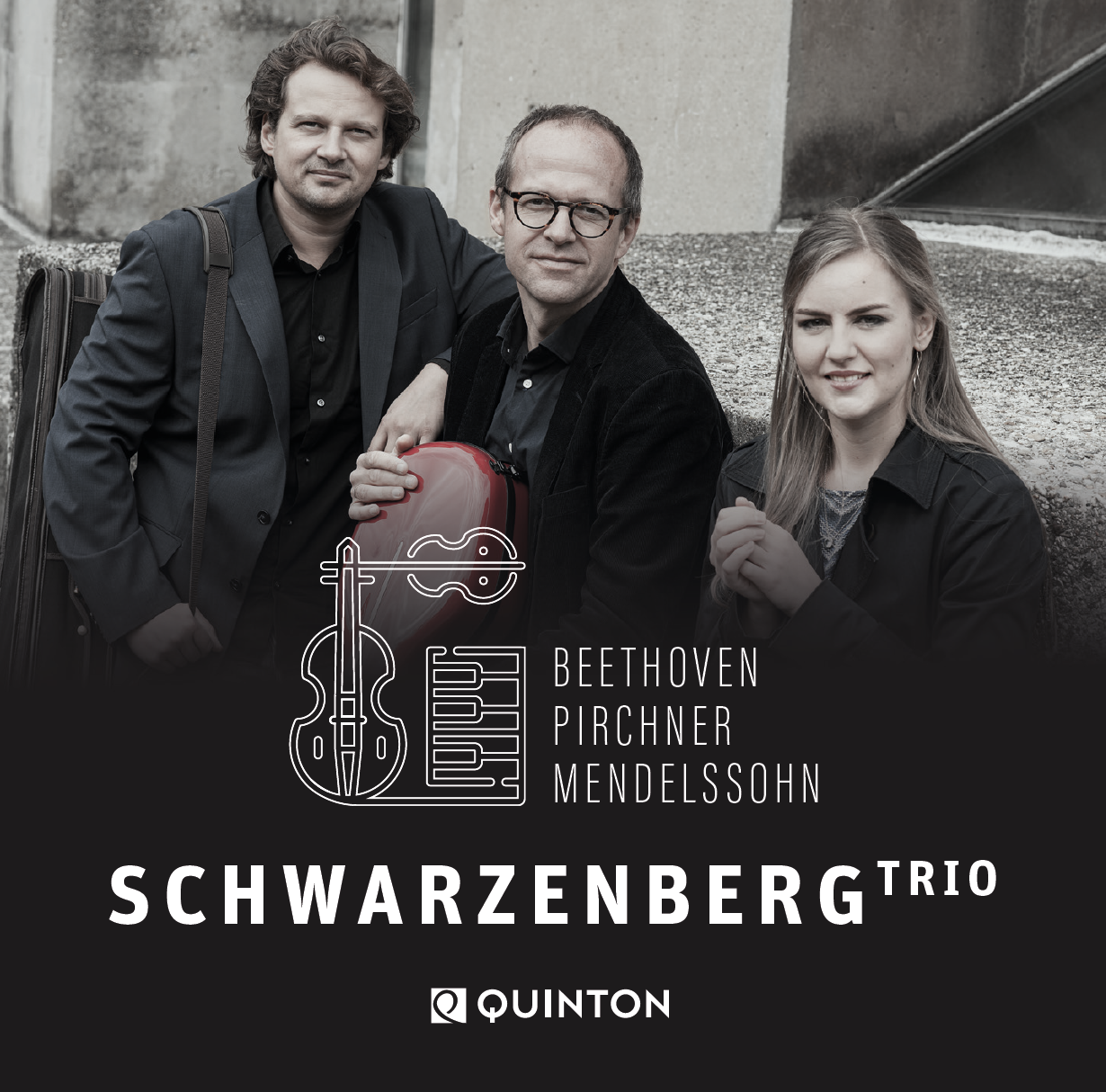by Renate Wagner, Online Merker, March 16th 2021.
Three young musicians from Austria and Germany have joined to form the ensemble known as the Schwarzenberg Trio. The pianist hails from Vorarlberg, the cellist was born in Vienna and raised in Vorarlberg, and the trio often performs there. Yet neither the village of Schwarzenberg in the Bregenzerwald nor the princely Schwarzenberg family provided the name. Instead, the ensemble took its title from Vienna’s Schwarzenbergplatz, where the musicians first came together.
The trio regrouped around cellist Roland Lindenthal. He was joined by pianist Hanna Bachmann and violinist Franz-Markus Siegert, a Dresden native who is active in many Viennese orchestras and chamber ensembles.
The programme presented on their debut CD had already been performed live on several occasions, structured much like a concert programme: beginning and ending with classical repertoire, with a modern work placed in between. This attractive format could well have earned them many more successful live engagements, if the pandemic had not intervened. Yet the lockdown offered these artists an opportunity they gladly seized: they recorded the programme at the Bösendorfer piano manufactory in Wiener Neustadt for their first album.
The journey begins with Ludwig van Beethoven’s Piano Trio Op. 1 No. 1 in E-flat major, written during his early years in Vienna, in a key often associated with Mozart. Its lightness permeates all four movements: the buoyant opening movement with its sparkling piano figurations, lyrical violin phrases shaded by the cello’s darker nuances, and the piano subtly in the background. Together, the trio conjures a blissful half-hour of Beethoven, breathing with untroubled enchantment.
And then? The Tyrolean composer Werner Pirchner, who passed away twenty years ago yet still sounds strikingly “modern.” Originally conceived as incidental music for a play by fellow Tyrolean Felix Mitterer, it was later shaped into a piano trio. The work, titled Heimat?, bears Pirchner’s typical question-marked movements (Aus dem Nichts?, Wiesel?, Stimmungslied?, Freundlich?). True to form, there are no firm points of reference for the listener: at first faint squeaks, strings plucked as though experimentally, the piano largely withdrawn, then a tentative violin melody, followed by the cello. The instruments find their way together, but never in the sense of a conventional piece.
Pirchner resisted any categorization within classical forms. Although critics often highlight his blending of popular and “serious” idioms, this particular piece is less about stylistic fusion than about provoking thought. The result is not disturbing, but rather fascinating—more of an intellectual engagement than an invitation for emotional immersion.
Emotional richness comes to the fore in the final work, Felix Mendelssohn’s Piano Trio in D minor Op. 49. Here, pure Romanticism reigns: in contrast to Beethoven’s delicate sound, Mendelssohn demands the full sonority of all three instruments, passing the musical leadership seamlessly among them in lush, flowing transitions. The virtuosity required of all players is undeniable, alongside the composer’s gift for glorious melody. The Schwarzenberg Trio proves fully equal to these demands, across all the composers represented. One can easily imagine that, in the hopefully not-too-distant future, they will be in great demand as live performers.
